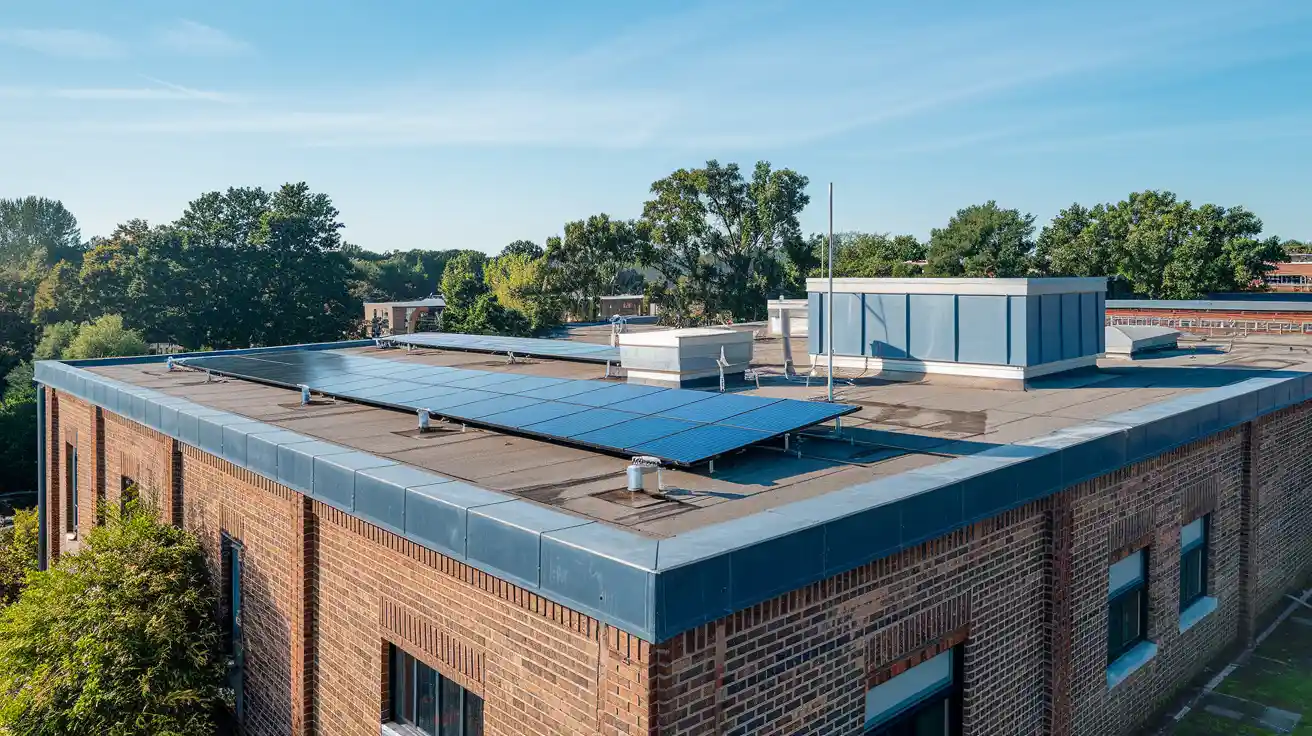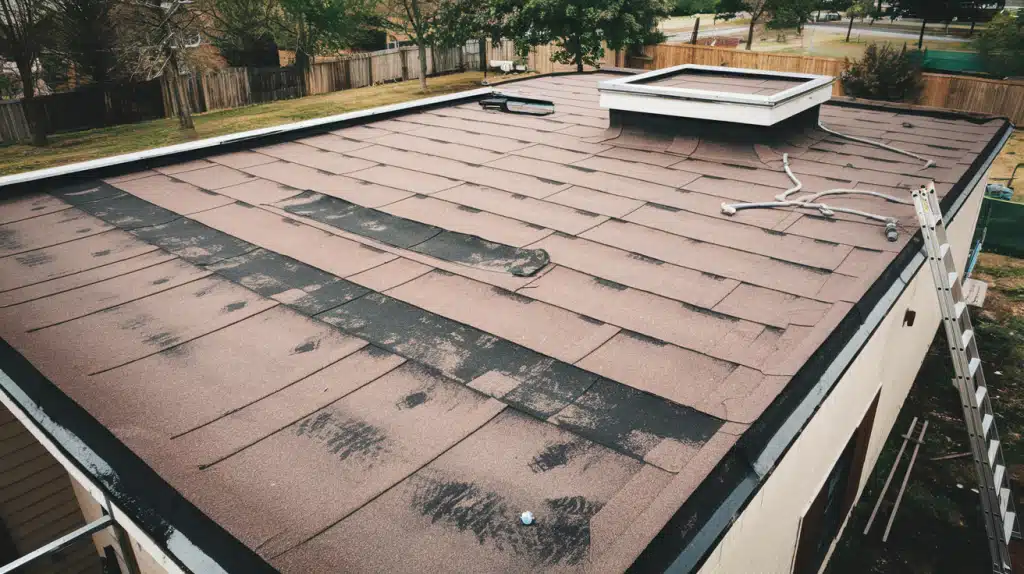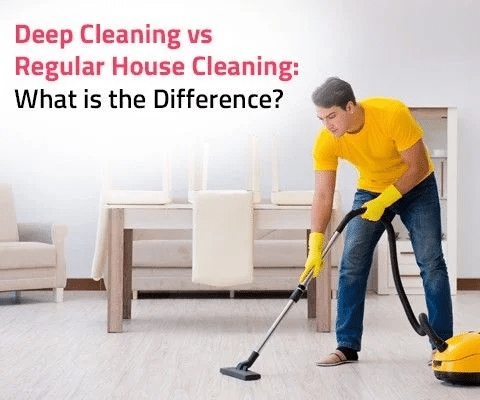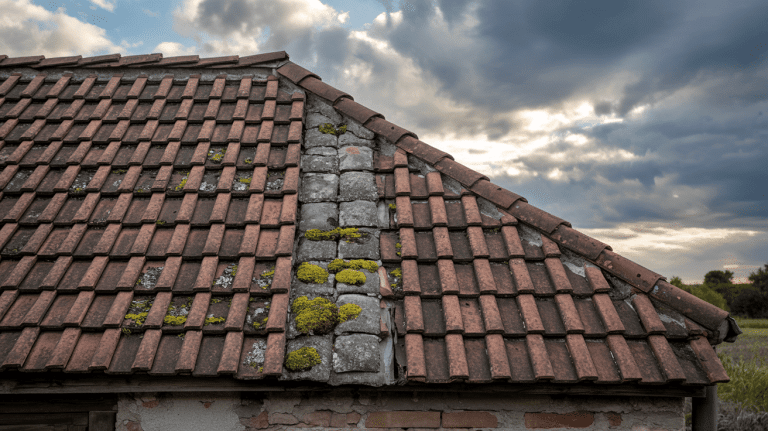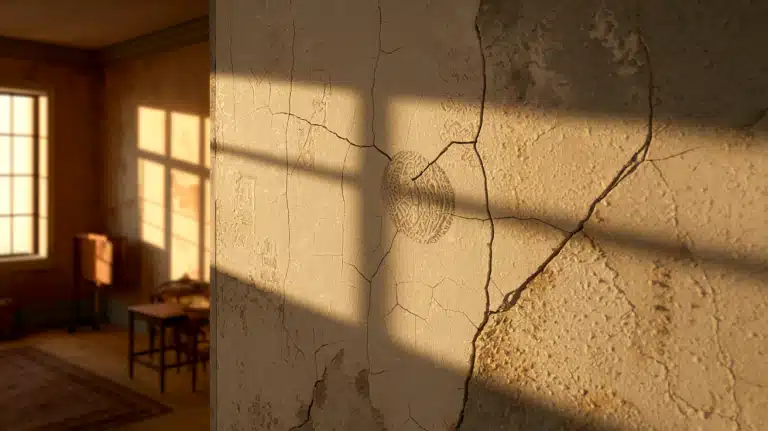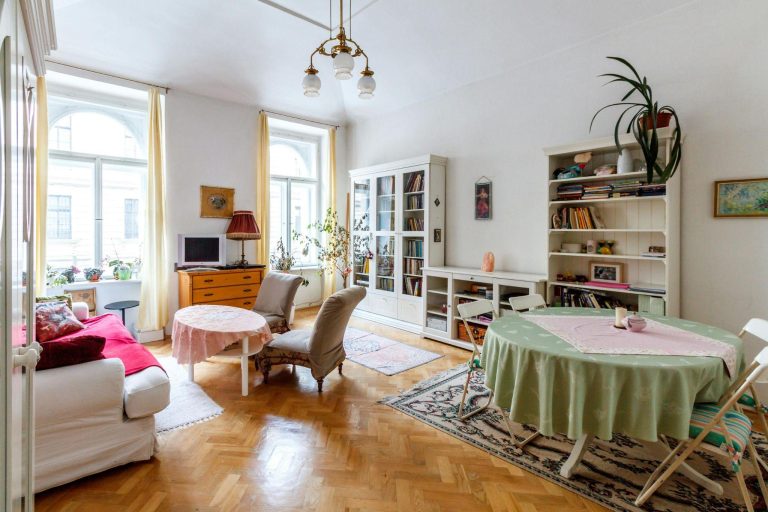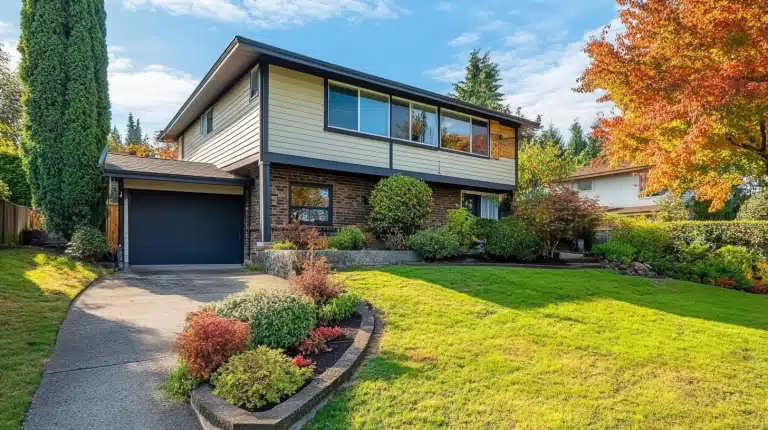How Much Does Flat Roof Replacement Cost? A Complete Guide
Planning a flat roof replacement can feel overwhelming when you need to evaluate multiple options and contractors. Most homeowners worry about making the wrong choice or selecting inappropriate materials for their climate.
You can understand exactly what drives replacement decisions and learn proven strategies to make smart choices without sacrificing quality. Flat roof replacement success depends on key factors that many contractors don’t fully explain upfront.
With the right knowledge about material options, labor considerations, and timing strategies, you can make informed decisions that protect your home for years to come. This guide breaks down everything about flat roof replacement planning.
Learn how to evaluate options accurately, choose the best materials for your climate, and make smart decisions on your project while ensuring long-lasting protection for your home.
What is a Flat Roof?
A flat roof is a type of roofing system that appears completely level or has a very slight slope. These roofs don’t have the steep angles you see on traditional pitched roofs. Instead, they sit nearly horizontal on top of buildings.
Most flat roofs aren’t truly flat. They have a small slope of about 1/4 inch per foot. This slight angle helps water drain off the surface. Without this slope, water would sit on the roof and cause problems.
You’ll often see flat roofs on commercial buildings, modern homes, and urban structures. They’re popular because they:
- Save space – No attic or steep angles take up room
- Cost less – Requires fewer materials and simpler construction
- Easy access – Simple to walk on for maintenance and repairs
- Flexible design – Can hold rooftop gardens, solar panels, or HVAC units
- Weather resistant – Handles high winds better than sloped roofs
The design makes flat roofs practical for many building types. They work well in areas with less rainfall since water drainage is more controlled. Modern flat roofs use special materials and systems to keep water out and provide good insulation.
Flat Roof Replacement Quick Cost Overview
Replacing a flat roof involves several cost factors that vary by location and materials. Here’s what you can expect to pay:
Average Cost Range: Most homeowners spend between $5,000 $22500 for flat roof replacement. The final price depends on your roof size, material choice, and local labor rates.
Cost Per Square Foot:
- Basic materials: $2.50 and $7 per sq. ft
- Mid-range options: $5.50–$12 per sq. ft.
- Premium materials: $20–$35+ per sq. ft.
Additional Expenses to Consider: Labor costs typically add 40-60% to material prices. You might also need to budget for:
- Roof deck repairs if damage exists
- Permit fees required by your city
- Disposal costs for old roofing materials
- Insulation upgrades for better energy efficiency
Key Factors Influencing Flat Roof Replacement Cost
Several important factors determine your final flat roof replacement cost, from material choice to labor rates in your area. Comprehending these variables helps you budget accurately and make informed decisions
1. Roof Size and Square Footage
The size of your flat roof directly impacts replacement costs. Contractors typically charge per square foot, so larger roofs cost more. A 1,000 square foot roof will cost significantly less than a 3,000 square foot roof.
Most roofing companies measure in “squares” – each square equals 100 square feet. Small residential flat roofs might be 10-15 squares, while larger homes can have 20-30 squares or more. The total square footage determines how much material you’ll need and how long the job will take.
2. Material Type and Quality
Your choice of roofing material creates the biggest cost difference. Basic built-up roofing (BUR) costs less than modern single-ply membranes. EPDM rubber roofing offers good value, while TPO provides energy efficiency at moderate prices.
Premium materials like modified bitumen or PVC cost more upfront but last longer. Some materials come with better warranties or energy-saving features. The quality level you choose affects both initial costs and long-term value.
3. Labor Costs in Your Area
Labor rates vary widely by location and local market conditions. Urban areas typically charge more than rural locations. Skilled roofers in high-demand markets command premium prices.
The complexity of your roof design also affects labor costs. Simple rectangular roofs take less time than roofs with multiple levels, skylights, or unusual shapes. Weather conditions during installation can also impact labor time and costs.
4. Existing Roof Condition
The condition of your current roof affects replacement costs. If the roof deck underneath is damaged, you’ll need structural repairs before installing new materials. Water damage, rot, or structural issues add to the total project cost.
Removing old roofing materials also varies in difficulty. Some materials come off easily, while others require special equipment or disposal methods. The number of existing roof layers affects removal time and costs.
Material Comparison for Long-Term Roofing Value
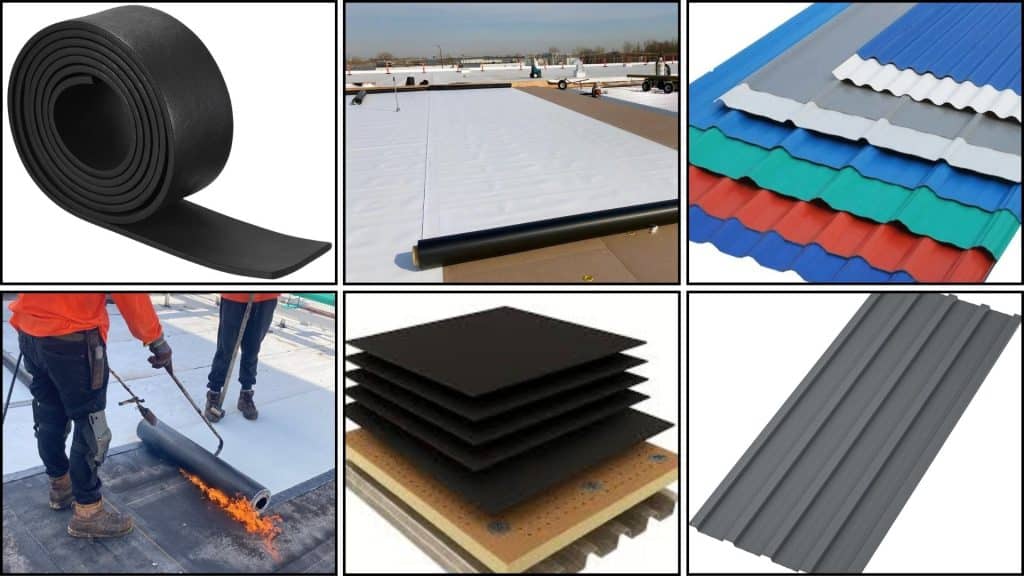
Choosing the right material depends on your budget, climate, and long-term plans. Each option offers different benefits for durability, cost, and maintenance needs.
| Material | Lifespan | Key Features | Best For |
|---|---|---|---|
| EPDM Rubber | 15-25 years | Flexible, easy repair, weather-resistant | Residential homes |
| TPO | 15-20 years | Energy efficient, heat reflective, lightweight | Commercial buildings |
| PVC | 20-30 years | Chemical resistant, strong seams, fire retardant | Industrial facilities |
| Modified Bitumen | 10-20 years | Self-healing, easy installation, good insulation | Older buildings |
| Built-Up Roofing (BUR) | 15-30 years | Multi-layer protection, proven performance | Heavy traffic areas |
| Metal Roofing | 40-70 years | Long-lasting, recyclable, fire-resistant | Modern homes |
Balance upfront costs with long-term value. Higher-priced materials often provide better warranties and lower maintenance costs over time. Consider your local climate and building use when making your final decision.
How to Cut Your Flat Roof Replacement Costs
Smart planning and timing can significantly reduce your flat roof replacement costs. Here are proven strategies to save money without compromising quality.
- Get Multiple Quotes: Compare at least three licensed contractors. Price differences can vary by 20-30% between companies for identical work and materials.
- Choose Off-Season Timing: Schedule replacement during fall or winter months when contractors offer lower rates due to reduced demand and competition.
- Bundle Related Work: Combine roof replacement with gutter installation, insulation upgrades, or solar panel work to negotiate better overall pricing deals.
- Consider Mid-Range Materials: Avoid the cheapest options that fail quickly, but premium materials aren’t always necessary. Quality mid-range materials offer the best value.
- Maintain Your Current Roof: Regular maintenance and small repairs extend roof life, delaying expensive full replacement by several years while saving money.
- Check for Rebates: Research local utility rebates for energy-efficient materials, tax credits for certain roofing types, or manufacturer warranties that reduce costs.
Flat Roof Repair vs Replacement: Complete Comparison
Deciding between flat roof repair and replacement depends on several key factors, including roof age, damage extent, and your long-term plans. This comparison helps you evaluate both options based on practical considerations.
| Factor | Flat Roof Repair | Flat Roof Replacement |
|---|---|---|
| Best For | Minor leaks, small damaged areas under 25% of the flat roof | Extensive flat roof damage, old systems, multiple leak points over 30% |
| Flat Roof Age | Under 10-15 years with good membrane condition | Over 15-20 years or when the flat roof membrane deteriorates |
| Project Scope | 1-3 days, patch damaged sections, stay at home | 3-7 days complete flat roof replacement, may need relocation |
| Long-term Value | 1-5 years warranty on repairs, temporary fix | 15-30 years full flat roof system warranty, permanent solution |
| Material Options | Must match existing flat roof materials | Upgrade to modern flat roof materials (EPDM, TPO, PVC) |
| Property Investment | Maintains current value, addresses immediate issues | Increases home value, improves flat roof energy efficiency |
Use this table to compare timelines, understand warranty differences, evaluate material options, and determine which solution best fits your situation and budget.
Conclusion
Flat roof replacement costs depend on your roof size, material choice, and local labor rates. The key to getting the best value lies in understanding what drives these costs and making informed decisions about materials and timing.
Remember that choosing quality materials like EPDM rubber or TPO can provide 15-25 years of reliable protection. Getting multiple quotes, scheduling during off-season periods, and bundling related work can save you thousands without sacrificing quality.
Don’t wait until emergency repairs become necessary. A well-planned flat roof replacement protects your home, improves energy efficiency, and increases property value. The investment pays for itself through reduced maintenance costs and better performance.
Ready to start your flat roof replacement project?
Frequently Asked Questions
Does Homeowners Insurance Cover Roof Replacement?
Homeowners’ insurance covers roof replacement for storm damage, hail, fire, or sudden accidents, but excludes normal wear, aging, or poor maintenance.
How Long Does It Take to Reroof a Flat Roof?
Flat roof reroofing typically takes 1-3 days for small homes and 3-7 days for larger buildings, depending on size and material complexity.
Do Flat Roofs Leak a Lot?
Flat roofs leak more than sloped roofs due to water pooling, but proper installation, drainage, and regular maintenance prevent most leaking issues.

